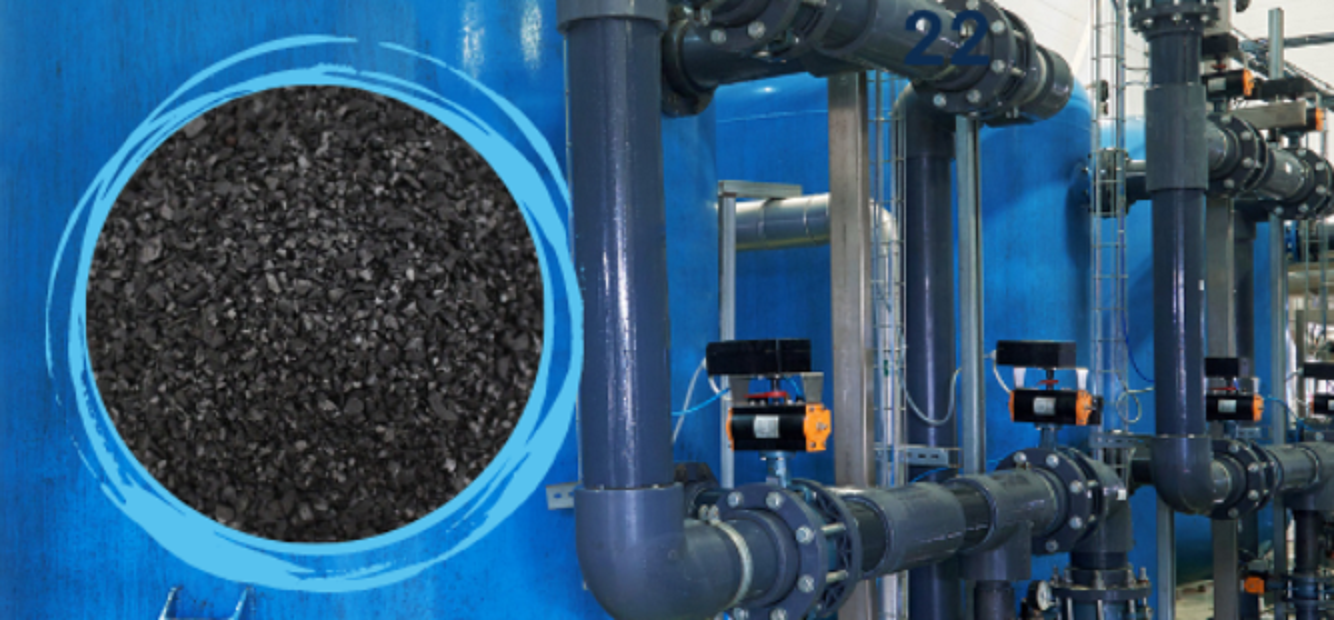
The difference between types of carbon in water treatment filters
A different number of carbon types are used in different types of water treatment filter membranes. It is widely used to purify drinking water in homes, institutions, and companies, to ensure the quality of the water and its suitability for drinking. The presence of pollutants and the increase in the percentage of chlorine in the water all affect the quality and taste of the water. It also affects human health, and the benefits expected from drinking water, which is the basis of life. Carbon filters are also used as a pre-treatment process for reverse osmosis water and as specialized filters designed to remove chlorine-resistant cysts.
Definition of carbon filter
It is a tool for filtering water from pollutants and impurities. A carbon filter is also known as (carbon filtration) where you use a piece of activated carbon designed to filter out as many contaminants in the water as possible.
Carbon media can be made from many materials such as coconut shells, bamboo, and fruit peels, and the most popular is charcoal. When treated through the “activation” process, the carbon media will open a huge number of pores that enable the carbon to pick up contaminants, which is known as “adsorption/attraction/desorption”. The adsorption function of activated carbon is widely used in residential, commercial, and industrial water purification process
What is activated carbon?
Activated carbon, or activated charcoal, is a porous charcoal with a very high surface area and has a great ability to chemically absorb the gases and toxins present around it. Therefore, it has multiple uses, especially in purifying polluted water and wastewater for use in drinking, agriculture, and industry. It is also used to kill bacteria and remove unpleasant odors from the air.
Carbon filter characteristics
A carbon filter is most effective in removing chlorine, sediment, and volatile organic compounds (VOCs) from water. However it is not effective in removing minerals, salts, and dissolved inorganic compounds. Typical particle sizes that can be removed by carbon filters range from 0.5 to 50 micrometers.
The efficiency of the carbon filter also depends on the water flow rate. Slow water flow makes the carbon filter more capable of absorbing contaminants of appropriate sizes.
Powdered activated carbon (PAC)
Activated carbon is manufactured in particle form as powders or fine granules less than 1.0 mm in size with an average diameter of 0.15 to 0.25 mm. Thus they offer a large surface-to-volume ratio with a small diffusion distance. This type of activated carbon is typically used in liquid-phase adsorption applications and offers low processing costs and flexibility of operation.
Granular Activated Carbon (GAC)
Granular activated carbon generally ranges in particle sizes from 0.2 mm to 5 mm and can be used in both gas and liquid phase applications. (GAC) has a relatively larger particle size compared to powdered activated carbon and, therefore, presents a smaller outer surface. These carbonates are suitable for absorbing gases and vapors because gaseous substances diffuse quickly. Granular carbonates are used in air purification and water treatment, as well as for general deodorization and component separation in flow systems and in rapid mixing basins.
Extruded Activated Carbon (EAC)
Extruded activated carbon is a cylindrical granular product whose size ranges from 1mm to 5mm. It is a highly durable activated carbon resulting from the extrusion process. Extruded activated carbon (EAC) combines powdered activated carbon with a binder, which are fused together and extruded into a cylindrical activated carbon block with diameters ranging from 0.8 to 130 mm. These are mainly used in gas phase applications due to their low-pressure drop, high mechanical strength, and low dust content. Also sold as a CTO (Chlorine, Taste, Odor) filter.
Properties of activated carbon
When selecting activated carbon for a specific application, a variety of properties must be considered. Our Carewater engineers can guide you in choosing the right activated carbon for your needs.
Pore structure
The pore structure of activated carbon varies and largely results from the material source and production method. The pore structure, along with gravitational forces, is what allows adsorption to occur.
Hardness
Hardness is also a major factor in selection. Many applications require activated carbon to have high particle strength and resistance to abrasion (breaking materials into granules). Activated carbon produced from coconut shells has the highest hardness of activated carbon.
Adsorption properties
The adsorption properties of activated carbon include several properties, including the adsorption capacity, adsorption rate, and overall effectiveness of activated carbon. Depending on the application (liquid or gas), these properties may be indicated by a number of factors, including iodine number, surface area, and carbon tetrachloride (CTC) activity.
Bulk density
While bulk density will not affect adsorption per unit weight, it will affect adsorption per unit volume of activated carbon.
Humidity
Ideally, the amount of physical moisture contained in activated carbon should fall in the range of 3-6%.
Ash content
The ash content of activated carbon measures the inert, amorphous, inorganic, and unusable portion of the material. Ideally, the ash content will be as low as possible, as the quality of activated carbon increases as the ash content decreases.
pH value
The pH value is often measured to predict the potential change when activated carbon is added to a liquid.
Particle size
Particle size has a direct effect on the adsorption kinetics, flow characteristics, and filterability of activated carbon.
Tips when using various types of carbon filters for water treatment
- Purchase the filter from a reliable source and check the brand.
- Ensure the availability of spare parts and original spark plugs.
- Periodic maintenance is carried out on the device by the manufacturer.
- Purchase a salt measuring device to test the quality of the water and the percentage of salts it contains.
- Clean and maintain periodically according to the manufacturer’s recommendations.

























